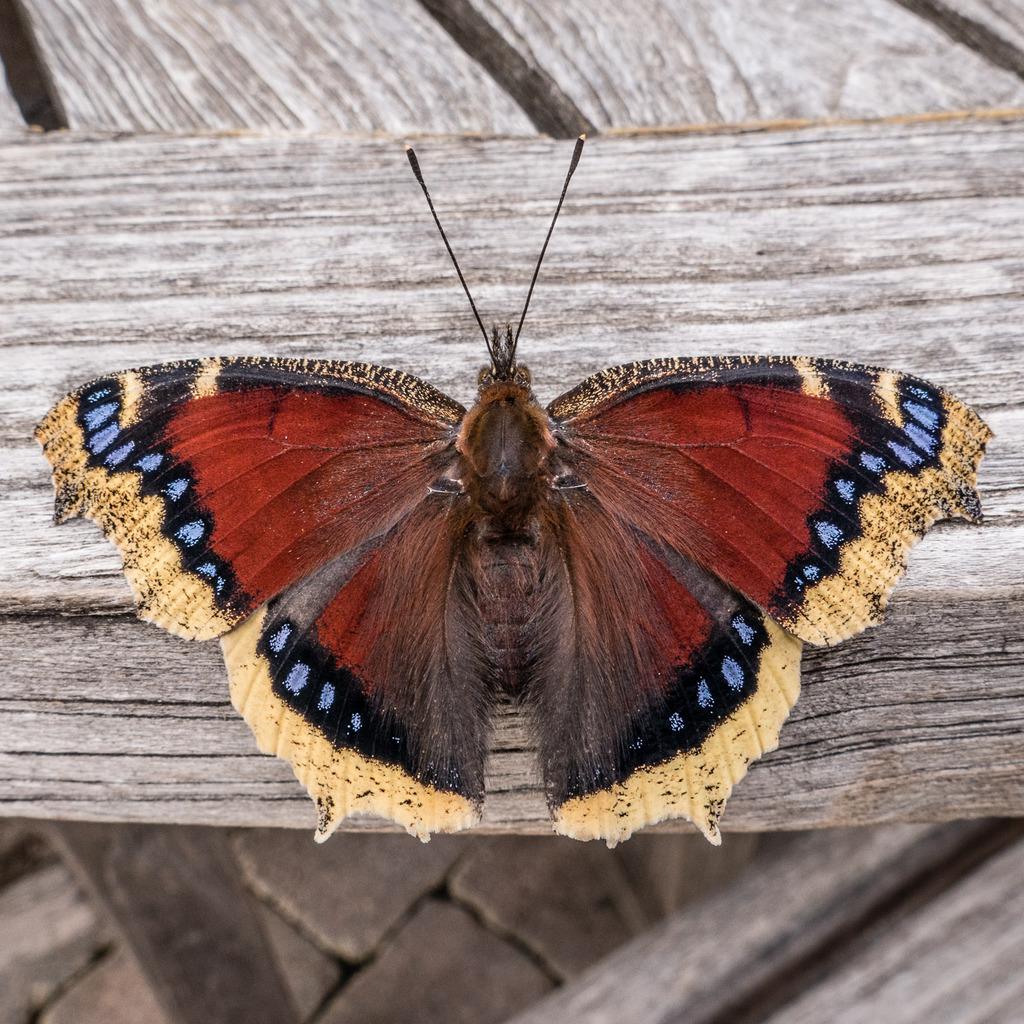If you spot a butterfly in early spring, even before the snow has melted, it could very well be a Mourning Cloak butterfly. Mourning Cloak butterflies have dark reddish-brown wings with a light-brown border and a row of small blue dots on the upper surface while the lower surface is dark brown with thin wavy black lines (2.25-4 in wingspan).
Mourning Cloak Butterflies overwinter as adults in tree cavities, under bark, or in unheated buildings. Once they come out of hibernation, the males perch in a sunny spot and wait for a female to flutter by so that they can mate. They die soon after the eggs are laid.
Mourning Cloak caterpillars are black with white specks and a row of red dots and several rows of black spines along their back. They eat the leaves of a wide variety of trees and shrubs, including Willow, Balsam Poplar, Cottonwood, Aspen, and Elm. The butterflies eat tree sap and decaying fruit.
Mourning Cloak butterflies can be found throughout North America although they are rare in the Gulf states and peninsular Florida. They can often be found among the trees along a river.
Did you know? The caterpillars will move away from the host plant where they've been eating before pupating to protect themselves from predators that spot the evidence of them feeding.
See Also: Admiral Butterfly, Azure Butterfly, Banded Woolly Bear Caterpillar, Cabbage White, Clouded Sulphur, Compton Tortoiseshell, Great Spangled Fritillary, Hawk Moth, Monarch Butterfly, Painted Lady, Tent Caterpillar, Tiger Swallowtail






